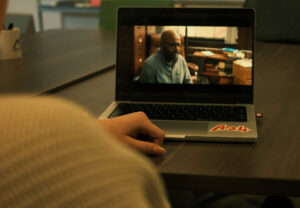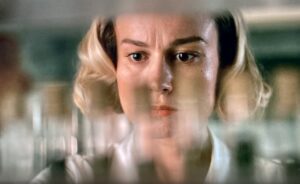The newly released “Lady Bird” follows a high school girl’s path through her senior year of Catholic high school, including her tribulations with religion and her overbearing mother. I’m a male, was raised as an atheist and went to public school for most of my life, and have a great relationship with my mom. There aren’t many Americans who relate less to the life of Christine “Lady Bird” McPherson and I am the wrong person to be reviewing it, but nonetheless, I’ll give it my best shot.
Lady Bird, played by Saoirse Ronan, has ambitious dreams of getting out of Sacramento, Calif. to go to college on the East Coast “where culture is, like New York, or at least Connecticut or New Hampshire, where writers live in the woods,” as she says during a college visit car trip with her mother. Her family lives on the self-described “wrong side of the tracks” in the lower-income section of Sacramento. Laurie Metcalf plays Lady Bird’s mother, Marion, a psychiatric nurse struggling to provide for the McPhersons after the father, Larry (Tracy Letts), is fired.
“Lady Bird” is Greta Gerwig’s second directorial gig, and by all accounts, she knocked it out of the park. This movie captures the crisis of the American teen in its rawest form, the characters are not beautified, and their inner workings are laid out graphically. Gerwig manages to cover almost every challenge a woman may face in the latter years of high school, while preserving “Lady Bird” as a single-track film. The magic of “Lady Bird” is in its normalcy. Lady Bird is one of millions of women with similar stories, including my 18-year-old sister, who is in her senior year of high school, and experiencing the same trials of getting into college. There is nothing special about the story, but it stands out as one of the most unique movies I’ve ever seen.
The cinematography does its job of placing “Lady Bird” in 2017. Many of the shots are cast in soft orange light, almost vintage. Ultimately, it’s not original, and the artistry of the filming takes a back seat to strong acting and dialogue.
Inspiration for Lady Bird’s last year of high school comes in the form of the drama club. Along with her best friend, Julie (Beanie Feldstein), she joins the club with the hopes of finding a way to entertain themselves for a lackluster year. Lady Bird falls for Danny, a sexually ambiguous Irish Catholic boy in the theater group and goes through some of the standard firsts, before falling into the rich crowd and struggling with figuring out how to deal with her newfound popularity.
“Lady Bird” is uncomfortably recognizable as a cross-section of the American teens, sometimes striking so close to home that my sister had to retract into her hoodie in embarrassment, for minutes at a time. It’s also hopeful. While the audience doesn’t know if Lady Bird will be classically successful in her life, we know that she finds peace with her beginnings in Northern California. Gerwig makes the optimism of Lady Bird’s story clear from the beginning.











